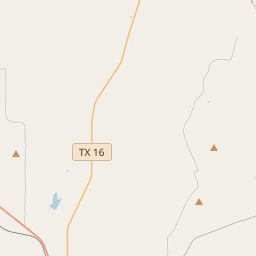Mount Olive Primitive Baptist Church and Cemetery
Historical marker location:






Mount Olive Primitive Baptist Church was organized in July 1899 with nineteen charter members in the community of North Bennett. The new church adopted the articles of faith of the Old Harmony Baptist Association and called Elder W. W. Fowler as first pastor. The church purchased 15 acres of land in 1901 for a house of worship and cemetery. The church building also was used as a school-house and was shared with other denominations. Area population declined during World War ll, and by 1999 the church had four members. In addition to several of the church's charter members, many of the early settlers of the community are interred here, as are veterans of the U. S. Armed Forces. With more than 150 graves in 1999, the cemetery continues to serve the entire community. (1999)
As one of the most visible programs of the Texas Historical Commission (THC), historical markers commemorate diverse topics in Texas history, including: the history and architecture of houses, commercial and public buildings, religious congregations, and military sites; events that changed the course of local and state history; and individuals who have made lasting contributions to the state, community organizations, and businesses.
The world's first rodeo was held in Pecos, Texas in 1883. The event included bronco riding, calf roping, and bull riding.
In 1854, Mills County was officially established by the Texas legislature and named after John T. Mills, a lawyer and soldier who fought in the Texas Revolution. The county's development was primarily driven by agriculture, with cotton becoming the dominant crop. The arrival of the railroad in the late 1800s further boosted the local economy, enabling the transportation of goods and facilitating trade.
With its rich soil and favorable climate, Mills County prospered throughout the late 19th and early 20th centuries. However, like many rural areas during this time, it faced challenges such as droughts, economic downturns, and the Great Depression. These hardships impacted the county's agricultural sector and led to a decline in population.
Despite these challenges, Mills County has maintained its unique character and close-knit community throughout the years. Today, it is known for its beautiful landscapes, historic sites, and outdoor recreational opportunities. The county continues to be influenced by its agricultural heritage while embracing the modern era, making it an interesting and dynamic place to live and visit.
Mills County Timeline
This timeline provides a glimpse into the major events and milestones that have shaped the history of Mills County, Texas.
- 1837 - Mills County is established and named after Texas Governor Branch Tanner Archer.
- 1849 - Gold is discovered in the county, leading to a short-lived gold rush.
- 1854 - Mills County becomes a part of the newly formed Brown County.
- 1876 - Mills County is reestablished as an independent county.
- 1880 - The county seat is established in Goldthwaite.
- 1920s - The oil industry has a significant impact on the local economy.
- 1947 - Mills County celebrates its centennial.
- 1965 - A severe flood causes significant damage to the county.
- 1990s - The county experiences economic growth due to an increase in tourism.
- 2018 - Mills County celebrates its 181st anniversary.